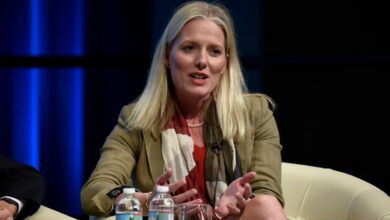Meet ‘Amasia’ – the new supercontinent that will be created as the Pacific ocean closes up

The Pacific Ocean is closing in on itself and will form a new supercontinent called Amasia, according to scientists.
The experts in Australia say the Pacific Ocean is slowly but consistently getting smaller, perhaps by around one inch a year.
As it does so, the tectonic plates on which the Americas rest get pushed westwards.
At some point – albeit not for for 200 or 300 million years – the Earth’s landmasses will come together with the Americas and Asia colliding to create a new supercontinent: Amasia,
Making use of supercomputer simulations, the scientists at Curtin University in Perth, Australia, calculated a new supercontinent would form.
“Earth’s known supercontinents are believed to have formed in vastly different ways, with two endmembers being introversion and extroversion,” they write in the National Science Review.
“The former involves the closure of the internal oceans formed during the break-up of the previous supercontinent, whereas the latter involves the closure of the previous external superocean.”
They add: “However, it is unclear what caused such a diverging behavior of supercontinent cycles that involved first-order interaction between subducting tectonic plates and the mantle. Here we address this question through 4-D geodynamic modeling using realistic tectonic setups.”
A 2012 report in Science said the geological record “reveals that in the past 2 billion years or so, there have been three supercontinents”.
The oldest known supercontinent, Nuna, came together about 1.8 billion years ago. The next, Rodinia, existed about 1 billion years ago, and the most recent, Pangaea, came together about 300 million years ago.
Lead author Chuan Huang, from Curtin’s Earth Dynamics Research Group said: “Over the past 2 billion years, Earth’s continents have collided together to form a supercontinent every 600 million years, known as the supercontinent cycle. This means that the current continents are due to come together again in a couple of hundred of million years’ time.”
He added: “The resulting new supercontinent has already been named Amasia because some believe that the Pacific Ocean will close (as opposed to the Atlantic and Indian oceans) when America collides with Asia. Australia is also expected to play a role in this important Earth event, first colliding with Asia and then connecting America and Asia once the Pacific Ocean closes.”
He said that by simulating how the Earth’s tectonic plates are expected to evolve using a supercomputer, “we were able to show that in less than 300 million years’ time it is likely to be the Pacific Ocean that will close, allowing for the formation of Amasia, debunking some previous scientific theories”.





